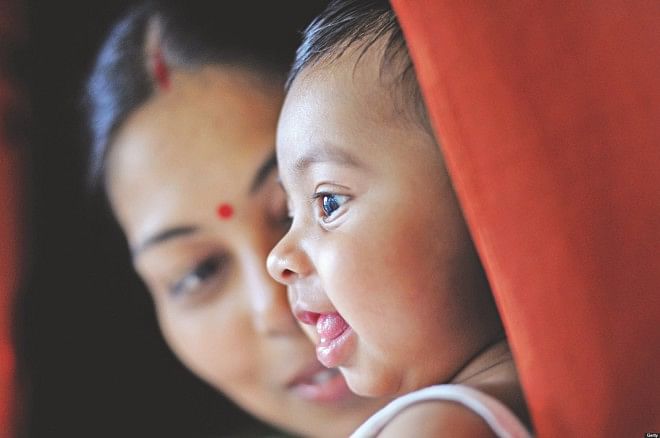Sharp decline in maternal and child deaths
Sharp decline in maternal and child deaths

Since the start of an international effort to address maternal and child mortality, millions of lives have been saved in South and Southeast Asia, according to two new studies by the Institute for Health Metrics and Evaluation (IHME) at the University of Washington.
In 2000, the Millennium Development Goals (MDGs) were established by the United Nations to drive maternal and child deaths down by 2015. Child and maternal deaths had been falling in most countries since the 1980s, but the pace accelerated after the goals were set. If countries continue on this course, child deaths will fall from more than 6 million in 2013 to fewer than 4 million in 2030. In South and Southeast Asia, child and maternal death rates are falling faster than the global average.
The results appeared in two separate studies. “Global, regional and national levels of neonatal, infant and under-5 mortality during 1990–2013: a systematic analysis for the Global Burden of Disease Study 2013” and “Global, regional and national levels and causes of maternal mortality during 1990–2013: a systematic analysis for the Global Burden of Disease Study 2013” were published May 2 in The Lancet.
The first installment in IHME’s new updates to the Global Burden of Disease (GBD) study finds that child death rates dropped by 48% globally between 1990 and 2013. However, 6.3 million children still died before their fifth birthday in 2013. Maternal deaths fell significantly over the same period, though 293,000 women still died in 2013 from pregnancy-related causes.
The vast majority of countries have seen accelerated reductions in maternal and child deaths — with child deaths declining by 3.5% per year since 2000 and maternal deaths by 2.7% per year since 2003.
In South and Southeast Asia, significant progress has been made in reducing maternal mortality, faster than rates achieved at the global level. In South Asia, maternal mortality declined at an average annual rate of 2.6% from 2003 to 2013 and in Southeast Asia, it declined by 3.4% over the same period.
While important progress is being made, more than 105,000 women in South Asia and just over 18,000 women in Southeast Asia still died from pregnancy-related causes in 2013. Despite its progress, Myanmar still had the highest observed maternal mortality rate in the Southeast Asian region, with 327.4 deaths per 100,000 live births. Sri Lanka had the lowest at 30.9.
South and Southeast Asia have also shown great progress in reducing child mortality, with an average annual reduction of 3.9% achieved since 2000. A significant drop in child deaths occurred due to the availability of new vaccines and drugs, followed by improvements in maternal education and rising per capita income. But more than 1.8 million South Asian children under 5 years of age still died before reaching their fifth birthday in 2013.
Pakistan saw the slowest rates of reduction in child mortality, with a 1.7% per year decline from 1990 to 2013. By contrast, Cambodia, Laos, Maldives, and Timor-Leste saw child deaths decline faster than expected, possibly due to post-MDG action. Throughout the region, Bangladesh, Bhutan, Maldives, Myanmar, Nepal, Sri Lanka, Thailand, and Timor-Leste are expected to achieve the MDG goal for reducing child mortality.
Key drivers of progress in reducing child deaths at the global level include maternal education, medical and public health innovations, and rising income. For each additional year of school mothers complete, child death rates drop by more than 8%. New drugs, vaccines and other health innovations led to 4.2 million fewer child deaths in 2013, compared to 1990; and rising per capita income led to more than 900,000 fewer child deaths. Policies that reduce anemia and malnutrition, prevent malaria during pregnancy, provide calcium and micronutrient supplementation, and encourage skilled birth attendance likely will lead to even greater improvements in child and maternal health, the researchers note.
An increased focus on and funding for child mortality and maternal mortality prevention has also led to significant declines. The leading cause of maternal death globally is medical complications of childbirth and the period post-delivery. Approximately one-quarter of maternal deaths were found to occur during childbirth and the 24 hours following. Another quarter happen during pregnancy, and the remaining deaths occur up to one year after delivery.